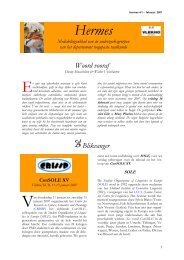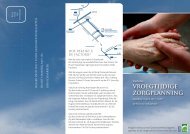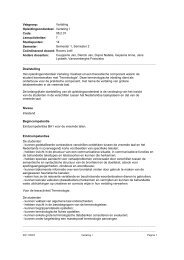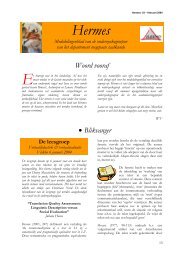HUB RESEARCH PAPER - Hogeschool-Universiteit Brussel
HUB RESEARCH PAPER - Hogeschool-Universiteit Brussel
HUB RESEARCH PAPER - Hogeschool-Universiteit Brussel
You also want an ePaper? Increase the reach of your titles
YUMPU automatically turns print PDFs into web optimized ePapers that Google loves.
Process consultation revisited 19<br />
differently. In the change process of the health-care agency, the managing director is seen as a<br />
legitimate authority figure. He is appreciated and accepted by nearly all members of the<br />
organization. When interviewed, one caregiver expressed this common feeling as: “he is a warm-<br />
hearted managing director, do you know that he knows every persons’ first name, we are an<br />
organization of approximately 450 people, amazing, isn’t it?”. In the change process of the<br />
consulting organization, the mutual perception of the relationship among the managing director<br />
and a large number of the organizational members is characterized by no ‘real’ contact, distrust,<br />
defending reactions, none acceptance, mutual blaming and complaining, etc. Over time, this<br />
feeling has spread over the entire organization. The relational context of the consulting<br />
organization in which interactions are embedded is furthermore characterized by uncertainty<br />
about the future of the company, a lack of a clear vision, a culture of ad hoc coping with<br />
problems, of unlimited autonomy and freedom, and of not keeping one’s commitments to each<br />
other without there being consequences. The overall mutually perception of relationships and<br />
intentions is “she/he wants to make progression at the expense of me, I cannot trust her/him”. On<br />
the contrary, the relational context of the care giving agency can be described as a ‘basic<br />
enthusiasm and energy’, high job satisfaction, a strong inspiring mission and vision that is<br />
understood, subscribed to and enacted in the daily work practices by the critical mass of the<br />
organizational members (“the talk is walked”), accepted leadership on all levels, problems that<br />
emerge are consequently translated into possibilities and actions for improvement, the shared<br />
practices of working on learning and development on all levels as enactment of a strong<br />
organizational value continuously stressed: “personal development is organizational<br />
development and vice versa”. The overall mutually perception of relationships and intentions is







